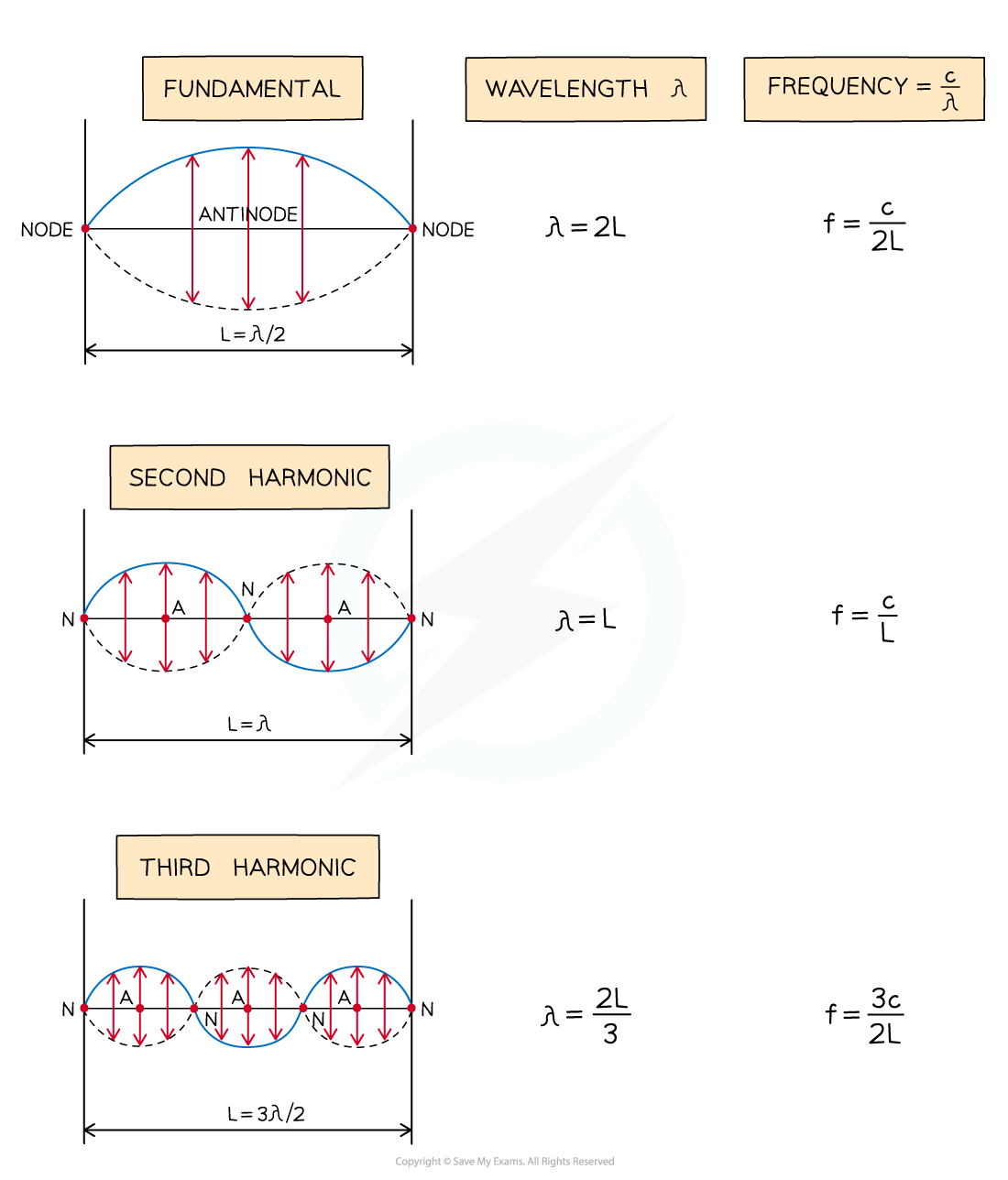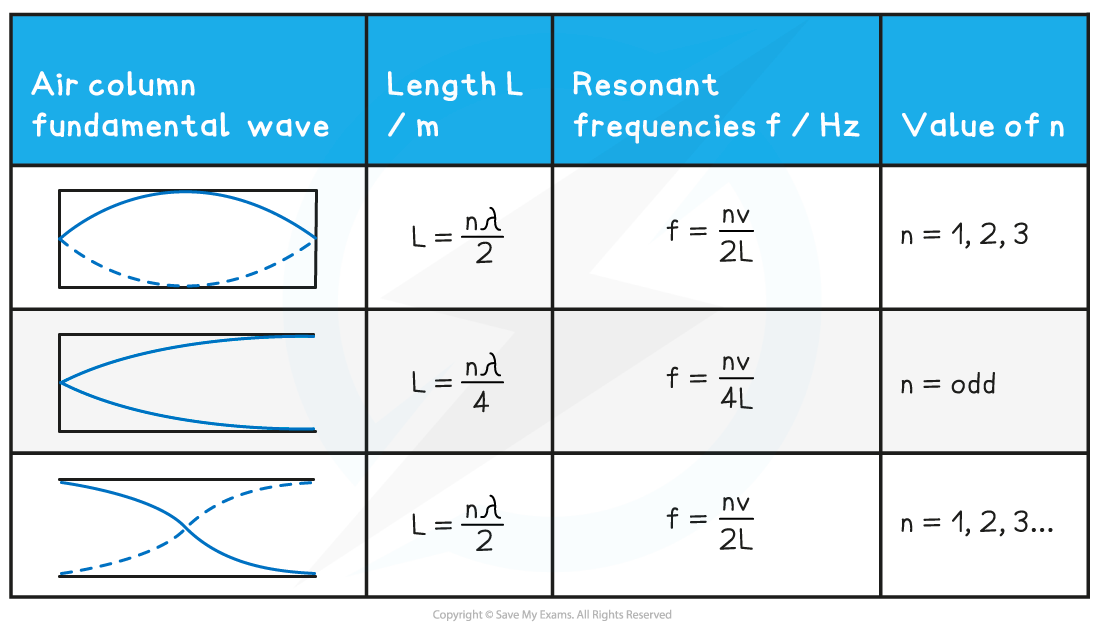Wavelength of Stationary Waves (Cambridge (CIE) AS Physics) : Revision Note
Wavelength of stationary waves
Stationary waves have different wave patterns depending on the frequency of the vibration and the situation in which they are created
Two fixed ends
When a stationary wave, such as a vibrating string, is fixed at both ends, the simplest wave pattern is a single loop made up of two nodes and an antinode
This is called the fundamental mode of vibration or the first harmonic
The particular frequencies (i.e. resonant frequencies) of standing waves possible in the string depend on its length L and its speed v
As you increase the frequency, the higher harmonics begin to appear
The frequencies can be calculated from the string length and wave equation
For a string of length L, the wavelength of the lowest harmonic is 2L
This is because there is only one loop of the stationary wave, which is a half wavelength
The second harmonic has three nodes and two antinodes
So the wavelength is equal to the length of the string
The third harmonic has four nodes and three antinodes
The nth harmonic has n antinodes and n + 1 nodes
The nth wavelength has a wavelength of
The wavelengths and frequencies of the first three harmonics can be summarised as follows:
Wavelength and frequencies of different harmonics

Diagram showing the first three modes of vibration of a stretched string with corresponding frequencies
One or two open ends in an air column
When a stationary wave is formed in an air column with one or two open ends, slightly different wave patterns are seen in each
Harmonics in an air column

Diagram showing modes of vibration in pipes with one end closed and the other open or both ends open
Image 1 shows stationary waves in a column which is closed at one end
At the closed end, a node forms
At the open end, an antinode forms
Therefore, the fundamental mode is made up of a quarter wavelength with one node and one antinode
Every harmonic after that adds on an extra node and antinode
Hence, only odd harmonics form
Image 2 shows stationary waves in a column which is open at both ends
An antinode forms at each open end
Therefore, the fundamental mode is made up of a half wavelength with one node and two antinodes
Every harmonic after that adds on an extra node and an antinode
Hence, odd and even harmonics can form
In summary, a column length L for a wave with wavelength λ and resonant frequency f for stationary waves to appear is as follows:
Air Column Length & Frequencies Summary Table

Worked Example
A standing wave is set up in a column of length L when a loudspeaker placed at one end emits a sound wave of frequency f. The column is closed at the other end. The speed of sound is 340 m s−1.

For a column of length 7.5 m, what is the wavelength of the second lowest note produced?
Answer:
Step 1: Determine the positions of the nodes and antinodes
One end of the column is closed, and the loudspeaker represents an open end
Hence, an antinode forms at the loudspeaker (open end) and a node forms at the closed end
The fundamental frequency represents the lowest note - this would be 1 node and 1 antinode
So, the second-lowest note must have 2 nodes and 2 antinodes

Step 2: Write an expression for the length of the sound wave in the column
In the column, there is a quarter wavelength and a half wavelength, or
Therefore the length of the column is:
Note: for a column with an open and closed end,
, this would represent the third harmonic (n = 3)
Step 3: Determine the wavelength of the second lowest note
Examiner Tips and Tricks
The fundamental counts as the first harmonic or n = 1 and is the lowest frequency with half or quarter of a wavelength. A full wavelength with both ends open or both ends closed is the second harmonic. Make sure to match the correct wavelength with the harmonic asked for in the question!

You've read 0 of your 5 free revision notes this week
Unlock more, it's free!
Did this page help you?
